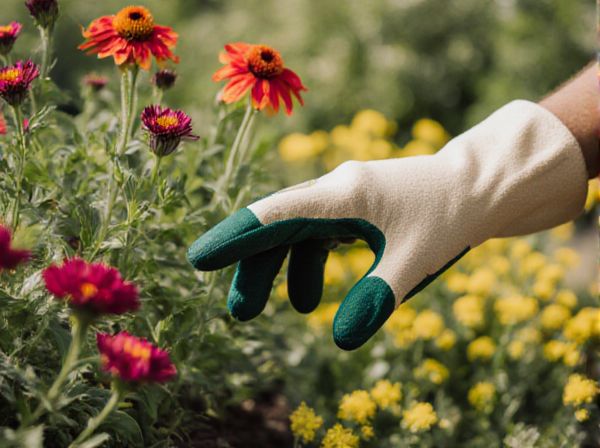
Floral Consistency vs Floral Fidelity Illustration
Floral consistency refers to a pollinator's tendency to visit flowers of the same species within a foraging trip, enhancing effective pollen transfer and increasing reproductive success for plants. Floral fidelity, closely related, emphasizes the pollinator's preference and repeated visits to flowers of a particular species over time, strengthening co-evolutionary relationships. Both traits reduce pollen wastage and improve pollination efficiency, which are crucial for the stability of plant-pollinator interactions and biodiversity.
Table of Comparison
| Aspect | Floral Consistency | Floral Fidelity |
|---|---|---|
| Definition | Pollinator's tendency to visit the same flower species within a foraging trip. | Pollinator's long-term preference for a particular flower species across multiple foraging trips. |
| Time Frame | Short-term, single trip behavior. | Long-term, behavior over multiple trips or days. |
| Ecological Role | Enhances effective pollen transfer during individual foraging. | Supports reproductive isolation and specialization over time. |
| Measurement | Sequence of flower visits analyzed per trip. | Frequency of flower species visitation across many foraging events. |
| Impact on Plant Pollination | Reduces pollen wastage in a single trip. | Promotes consistent cross-pollination among specific plant species. |
Understanding Floral Consistency and Floral Fidelity
Floral consistency refers to the tendency of pollinators to visit flowers of the same species during a foraging trip, enhancing effective pollen transfer and reproductive success of plants. Floral fidelity describes the preference of pollinators to repeatedly visit certain flower species across multiple foraging trips, which stabilizes plant-pollinator interactions over time. Understanding these behaviors is crucial for optimizing pollination efficiency and maintaining biodiversity in ecosystems.
Defining Key Terms: Consistency vs Fidelity in Pollination
Floral consistency refers to a pollinator's tendency to visit the same flower species within a foraging trip, enhancing effective pollen transfer. Floral fidelity describes the long-term preference of pollinators for particular plant species across multiple foraging bouts or seasons. Understanding these distinctions is crucial for studying plant-pollinator interactions and their impact on reproductive success and biodiversity.
Why Pollinator Behavior Matters in Your Garden
Pollinator behavior significantly influences plant reproduction by affecting pollen transfer efficiency and genetic diversity within your garden. Floral consistency--the tendency of pollinators to visit the same flower species during foraging--ensures precise pollen placement on conspecific stigmas, enhancing fertilization success. Understanding and encouraging floral fidelity in pollinators can optimize fruit yield and maintain healthy ecosystems by supporting specialized pollination networks.
The Role of Floral Consistency in Effective Pollination
Floral consistency, the tendency of pollinators to visit flowers of the same species during a foraging trip, enhances pollination efficiency by ensuring pollen transfer between compatible plants. This behavior minimizes interspecific pollen deposition, which can reduce seed set and reproductive success. Maintaining high floral consistency supports genetic diversity and ecosystem resilience by promoting effective cross-pollination within plant populations.
Exploring Floral Fidelity: Pollinator Preferences Explained
Floral fidelity describes pollinators' tendency to repeatedly visit flowers of the same species during foraging trips, enhancing pollination efficiency by reducing pollen waste. This behavioral trait contrasts with floral consistency, which emphasizes the overall uniformity in pollinator visits across a habitat. Understanding pollinator preferences in floral fidelity reveals how specialization drives plant reproduction success and shapes ecological interactions within pollination networks.
Impacts on Plant Diversity and Crop Yield
Floral consistency, where pollinators visit the same species within a foraging trip, enhances pollen transfer efficiency and increases crop yield by reducing heterospecific pollen deposition. Floral fidelity, the long-term preference for a particular plant species across multiple foraging trips, supports the maintenance of plant diversity by promoting specialized plant-pollinator interactions and reducing gene flow between species. Both behaviors are critical in agroecosystems; floral consistency boosts immediate fruit set, while floral fidelity fosters ecosystem resilience and sustainable crop production.
Factors Influencing Pollinator Choices
Pollinator choices between floral consistency and floral fidelity are influenced by factors such as nectar reward quality, floral morphology, and flower abundance. Pollinators exhibit floral fidelity when consistent rewards favor energy-efficient foraging, while floral consistency may be driven by innate preferences and learned behaviors. Environmental variables, including competition and predation risk, also shape pollinator decision-making and floral visitation patterns.
Enhancing Your Garden for Targeted Pollinator Behavior
Floral consistency refers to pollinators visiting the same flower species within a foraging trip, increasing pollination efficiency by reducing pollen waste. Floral fidelity emphasizes long-term loyalty to specific plant species, benefiting specialized pollinators and promoting genetic diversity. Designing garden landscapes with clusters of the same flowering plants encourages both floral consistency and fidelity, enhancing targeted pollinator behavior and improving overall ecosystem health.
Pollinator Conservation: Encouraging Both Consistency and Fidelity
Pollinator conservation strategies must balance promoting floral consistency--where pollinators specialize in visiting flowers of a single species within a foraging trip--and floral fidelity, which reflects their overall tendency to prefer specific plant species over time. Enhancing habitat diversity and floral resource availability supports both behaviors, ensuring effective pollen transfer and maintaining plant-pollinator network resilience. Conserving native pollinator populations like bees and butterflies involves tailored floral plantings that encourage repeated visits to consistent floral types while respecting fidelity patterns crucial for reproductive success.
Best Practices for Gardeners: Leveraging Pollinator Behaviors
Gardeners aiming to attract pollinators should emphasize floral consistency, ensuring that plant varieties bloom simultaneously to encourage pollinators like bees to visit multiple flowers of the same species, enhancing effective pollen transfer. Floral fidelity, the tendency of pollinators to visit the same plant species repeatedly, can be leveraged by planting densely grouped clusters of single species, which supports pollinator efficiency and improves fruit and seed set. Strategic garden planning with native plants that promote these behaviors optimizes pollination success and boosts biodiversity.
Floral Consistency vs Floral Fidelity Infographic

 gardendif.com
gardendif.com